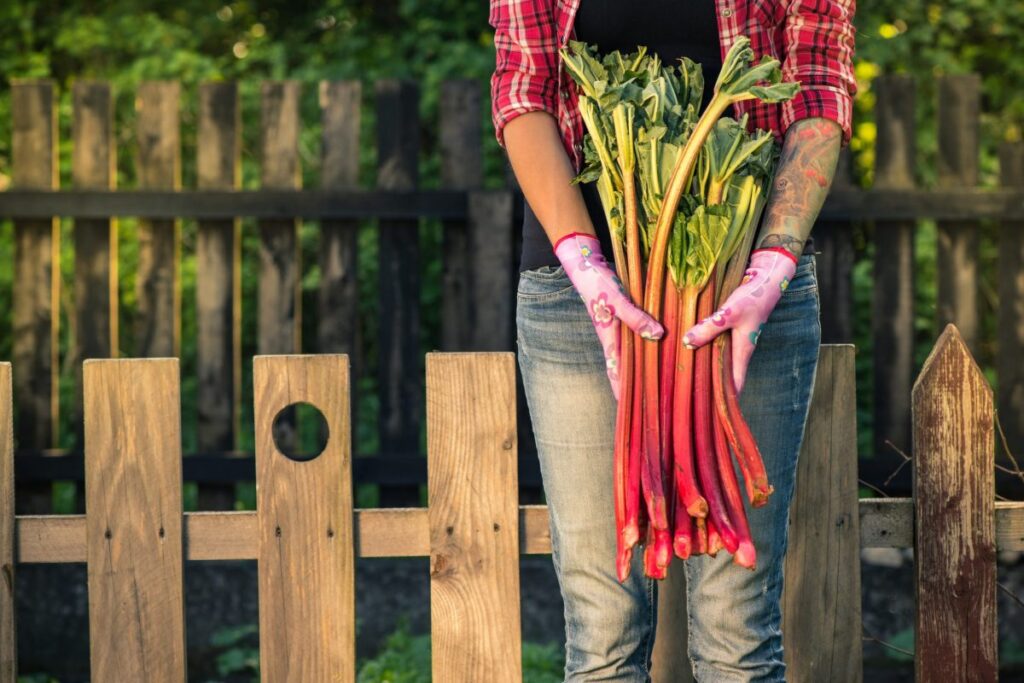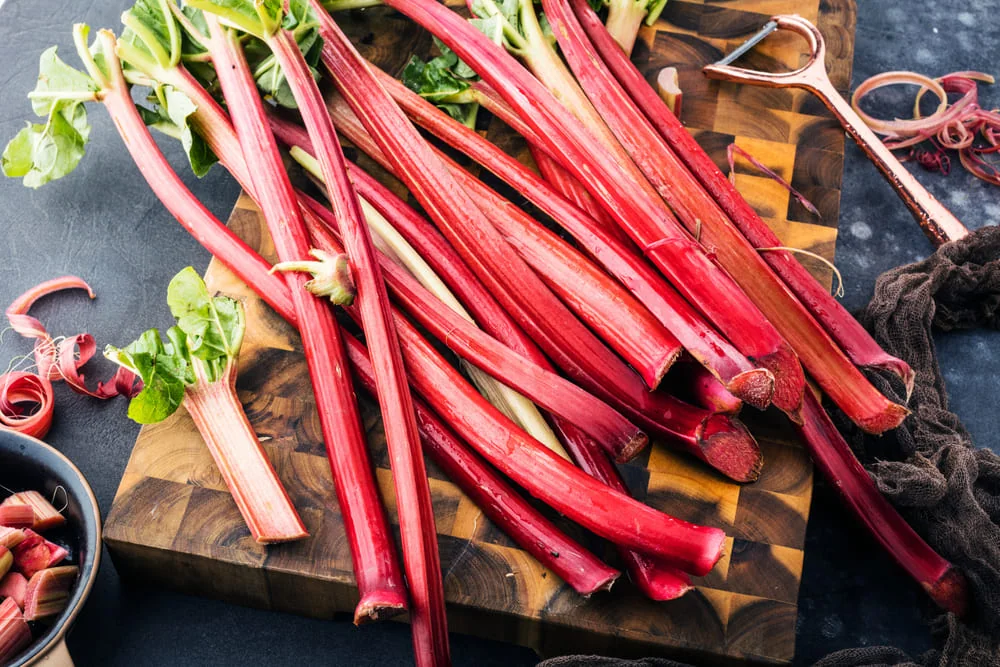Rhubarb, often referred to as rubarba in some cultures, is a hardy perennial plant with a long history of culinary and medicinal use. While commonly mistaken for a fruit due to its tart flavor and frequent use in desserts, rhubarb is technically a vegetable. This vibrant, tangy plant offers more than just flavor — it’s a treasure trove of nutrients and potential health benefits.
Let’s explore how to recognize rhubarb, prepare it properly, and harness its benefits for the body.
🌱 How to Recognize Rhubarb
Rhubarb is a distinctive-looking plant that is relatively easy to identify:
- Stalks: The edible part of the plant is its thick, celery-like stalks. These range in color from deep red to light green, often with a glossy sheen. The redder the stalk, the sweeter the taste — although all rhubarb is naturally tart.
- Leaves: Rhubarb leaves are large, heart-shaped, and bright green. Important: The leaves are toxic and should never be eaten due to high levels of oxalic acid and anthraquinone glycosides.
- Growth: Rhubarb grows in clumps and thrives in cool climates. You’ll typically find it in gardens or farmers markets from early spring to mid-summer.
🍴 How to Prepare Rhubarb
Before you enjoy rhubarb’s unique flavor, it’s crucial to prepare it correctly:
- Trim and Discard the Leaves: Always cut off and dispose of the leaves immediately after harvesting or buying rhubarb.
- Wash the Stalks: Rinse the stalks under cool water to remove any dirt or grit.
- Peel (Optional): If the stalks are particularly fibrous or mature, you may peel away the outer stringy layer.
- Cut: Slice the stalks into 1–2 inch pieces for cooking.
- Cook It: Rhubarb is rarely eaten raw due to its sourness. It’s typically:
- Stewed with sugar to make compote or sauces.
- Baked into pies, crumbles, or muffins.
- Made into jam or paired with strawberries and citrus for a tangy preserve.
Tip: Rhubarb pairs beautifully with sweet fruits and spices like strawberries, apples, cinnamon, and ginger.
💪 Health Benefits of Rhubarb
While often overlooked, rhubarb offers several impressive benefits:
1. Digestive Health
Rhubarb has been used in traditional medicine as a natural laxative. Its fiber content and certain compounds stimulate bowel movements, making it beneficial for those with constipation — but moderation is key.
2. Rich in Antioxidants
Rhubarb contains polyphenols such as anthocyanins and proanthocyanidins, especially in red stalks. These compounds may help combat oxidative stress, reduce inflammation, and support overall cell health.
3. Bone Strength
It contains a modest amount of vitamin K, which plays a role in bone metabolism and blood clotting.
4. Heart Health
Rhubarb is low in calories and contains dietary fiber, which may help lower LDL (“bad”) cholesterol when consumed as part of a balanced diet.
5. Weight Management
Due to its low calorie and high fiber content, rhubarb can promote satiety, which may support healthy weight management goals.
⚠️ Precautions
- Toxic Leaves: Always avoid rhubarb leaves — they are poisonous and can cause severe health issues if ingested.
- Oxalate Content: Rhubarb contains oxalates, which in large amounts can interfere with calcium absorption and may contribute to kidney stones in susceptible individuals.
- Laxative Effect: Consuming rhubarb in large quantities can cause digestive upset or diarrhea.

Rubarba (rhubarb) is more than just a tangy ingredient for pies — it’s a plant with a rich heritage and an array of health-promoting properties. Whether you’re stewing it into a sauce or baking it into a spring tart, rhubarb adds a vibrant twist to your kitchen while quietly supporting your body.
Just be mindful of its preparation, and you’ll discover why this plant has remained a favorite in gardens and kitchens for centuries.

